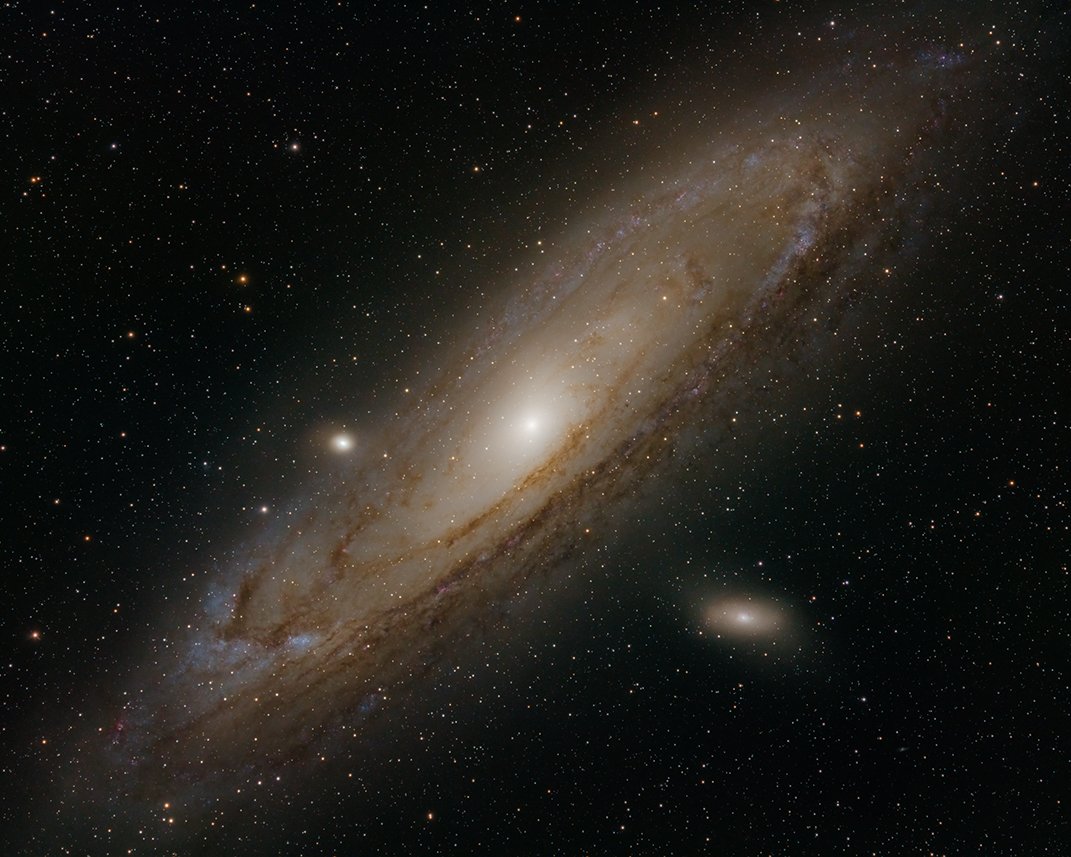
Astrophotography
Scotland is a very tricky, but very rewarding place to take long exposure images of the deep sky. With narrowband filters and CMOS sensors, its possible to get some really amazing data no matter what your Skys look like (so longs as they are clear).
All the images displayed were acquired and processed by Tristram, from various sites in the UK using amateur equipment. The imaging itself is the easy part though really… some of these images took longer to process than capture. The results though speak for themselves!
My images are available for prints, please send me a message using the contact form.
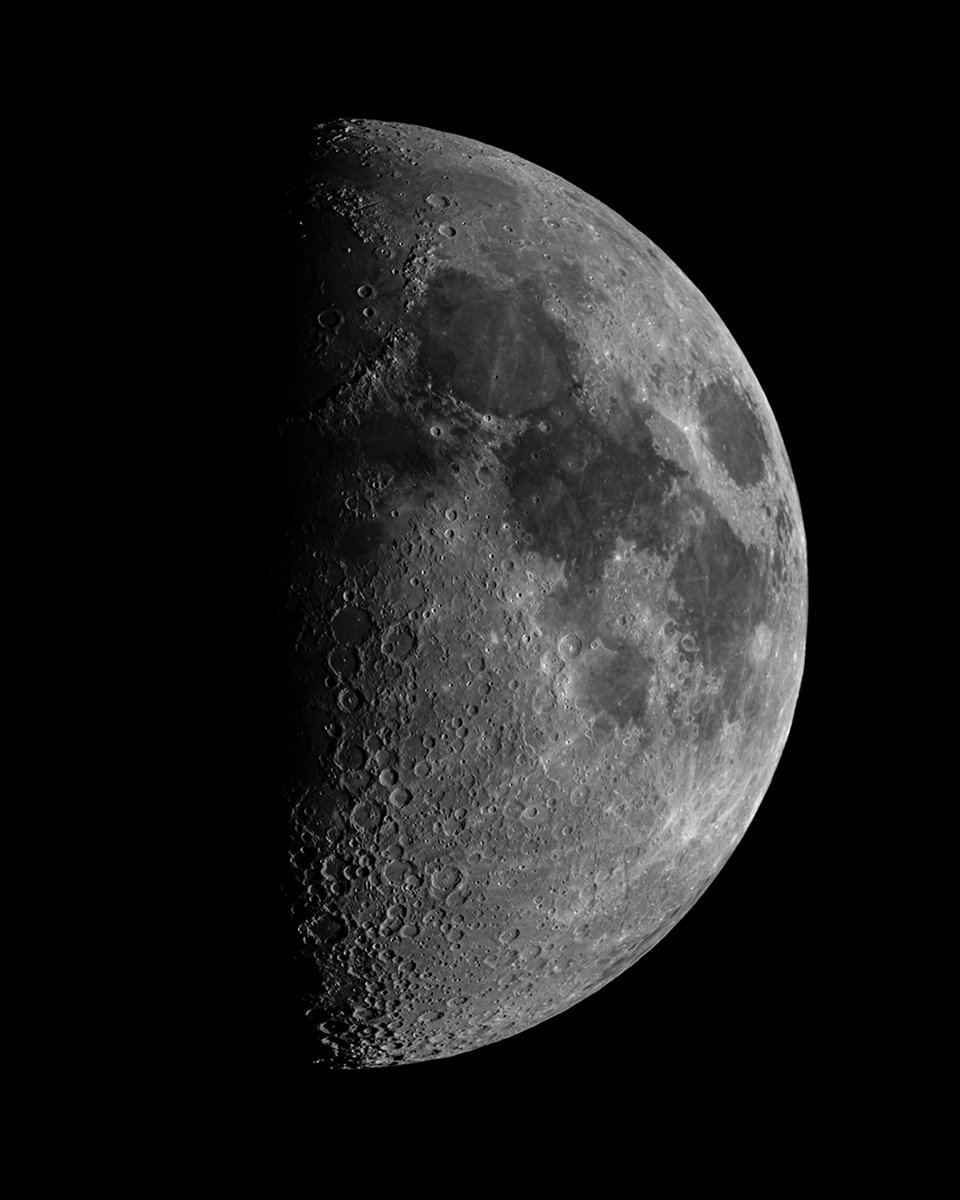
A 10 panel mosaic, best 200 frames of 1 mins videos for each panel. Taken from Comrie, Scotland using a Mewlon 180c reflector, a mono CMOS camera and an infra-red pass filter.
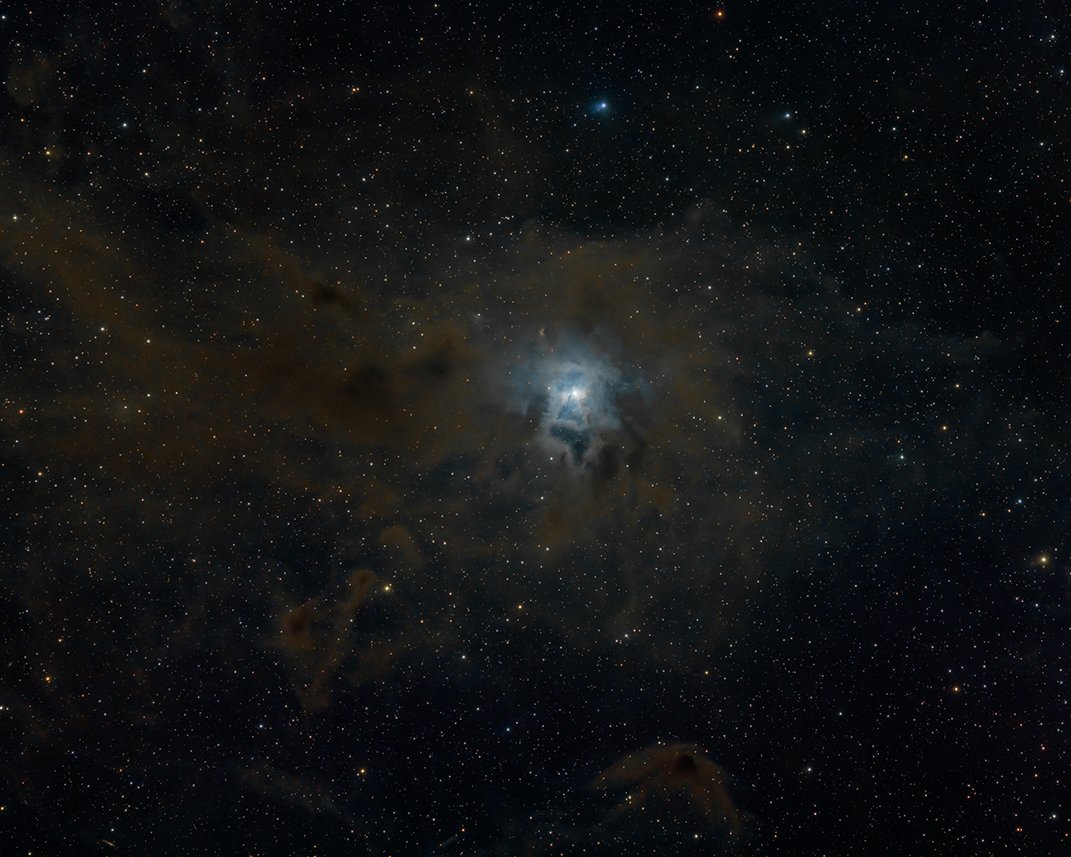
NGC7023 Iris Nebula, a very dusty part of our local galactic neighbourhood. About 45mins integration, taken from a dark site near Drumochter, Scotland using an 80mm refractor, and a colour CMOS camera.
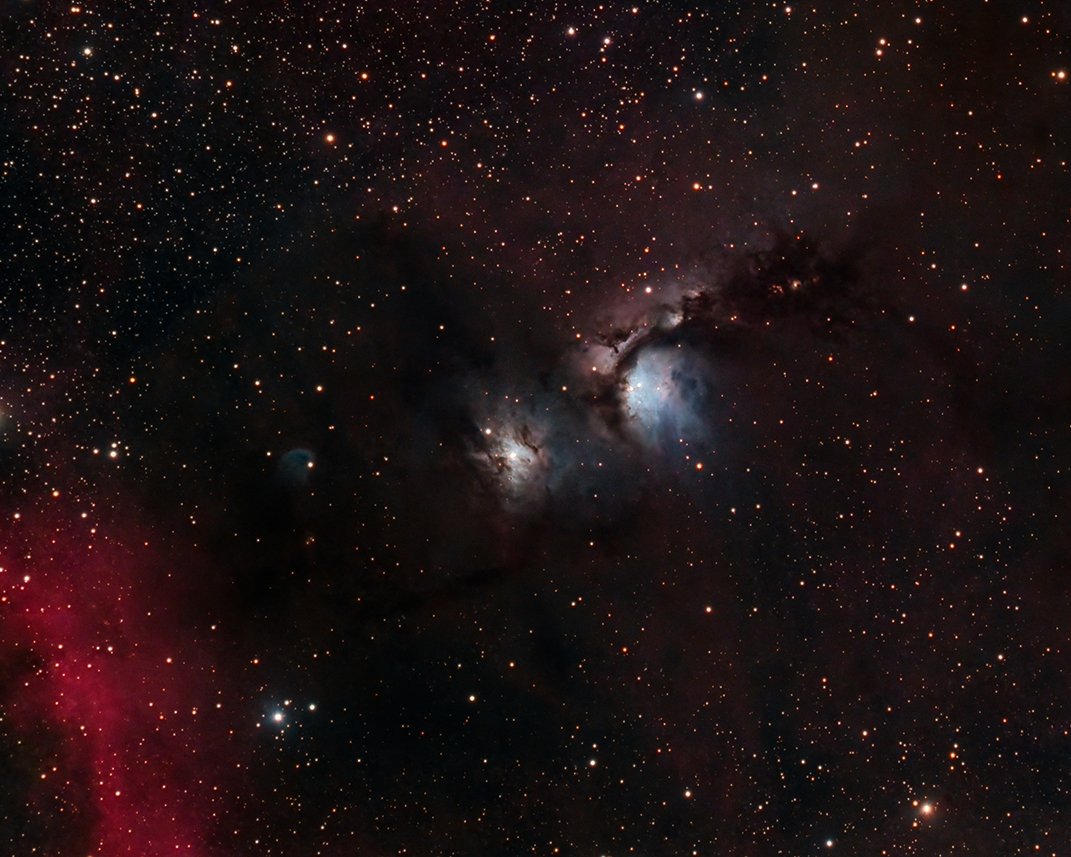
M78 is a reflection nebula in the Orion molecular cloud, just up from the left hand star in Orion's Belt (if you are in the northern hemisphere of course)! About 3 hours integration, imaged from Comrie, Scotland using an 80mm refractor, a mono CMOS camera and LRGB filters.

Subaru, or otherwise know as the Pleiades. A beautiful bright reflection nebula. Only 15 minutes integration time, imaged from a dark site near Drumochter, Scotland using an 80mm refractor, and a colour CMOS camera.

IC1805 Heart nebula is an emission nebula, with the surrounding molecular cloud emitting light due to radiation from stars being born. It's hard to emphasise just how large these structures are. This nebula is more than 100 light years from side to side. About two hours integration, taken from Bishopbriggs, Scotland using an 80mm refractor, a colour CMOS camera and an L-eNhance filter.
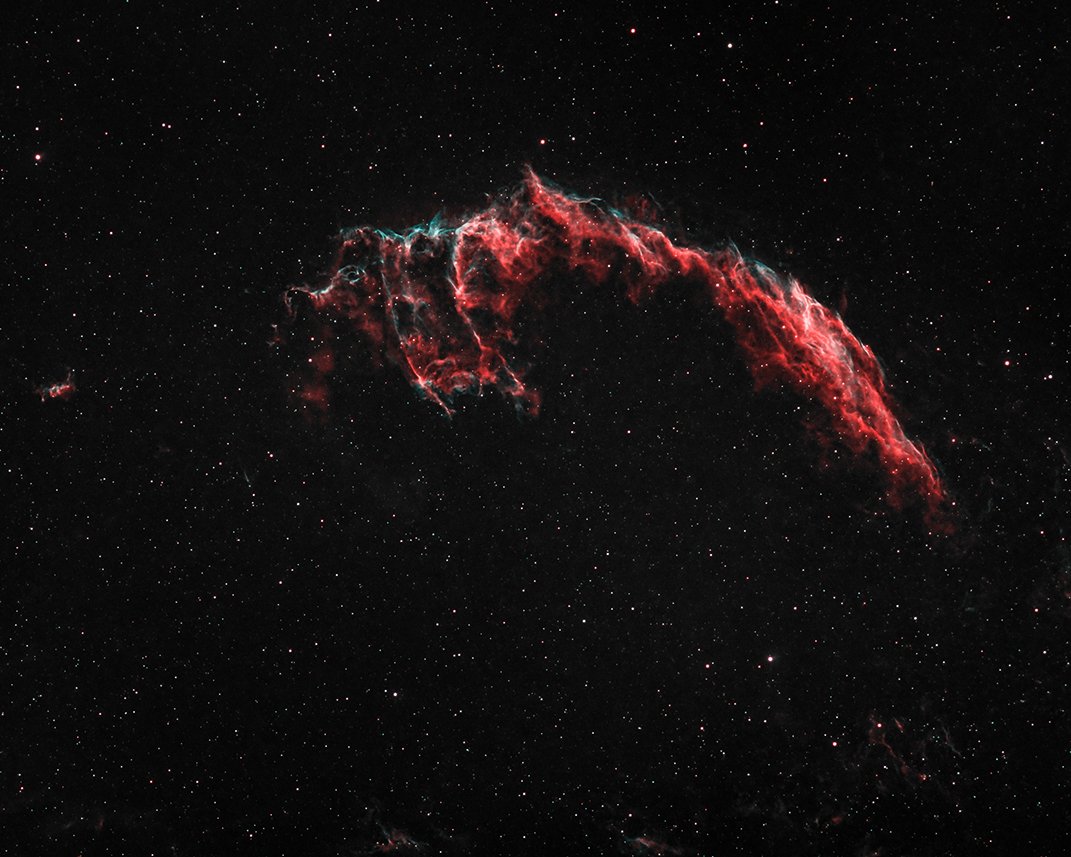
The Eastern Veil Nebula is part of a wider structure called the Cygnus loop, which is the remnants of a supernova explosion that happened about 5000 years ago, and is about 1500 light years from Earth. About two hours integration, imaged from Bishopbriggs, Scotland using an 80mm refractor, a colour CMOS camera and an L-eNhance filter.
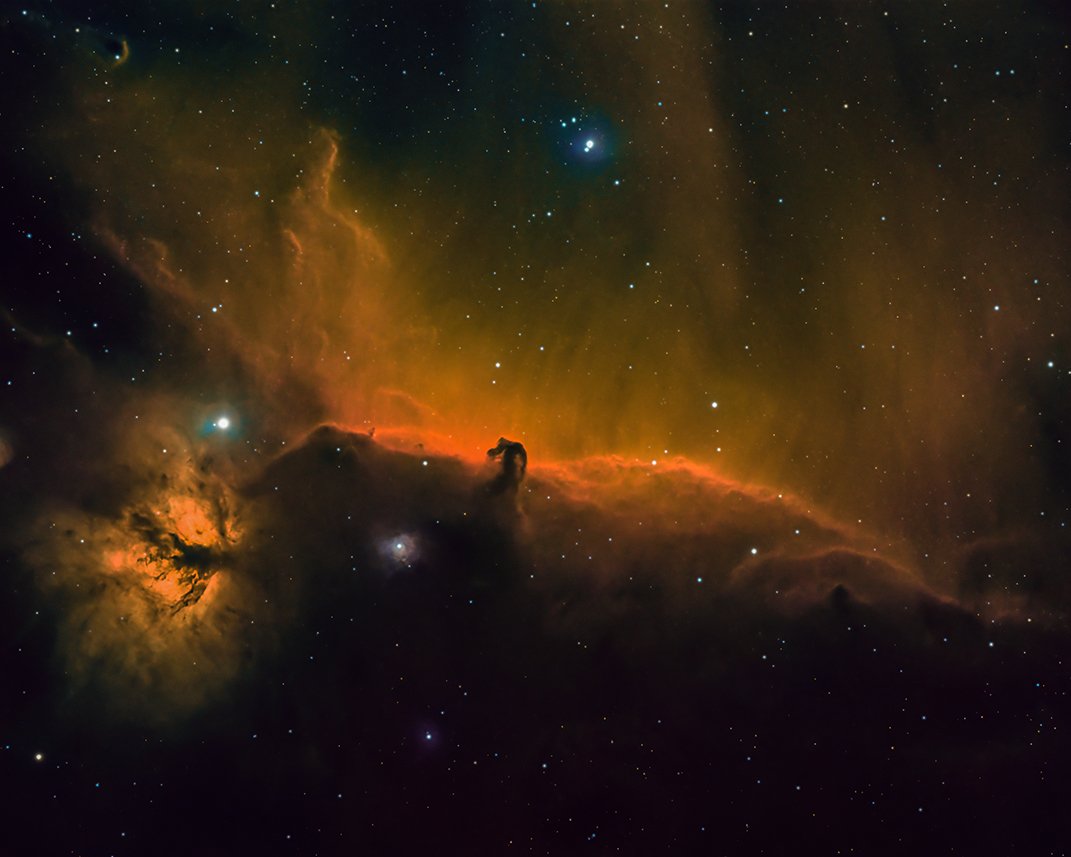
This is a false colour image of another part of the Orion molecular cloud, the horse head and flame nebula. Very hot new stars are stimulating the Sulpher, Hydrogen and Oxygen in the surrounding dust and gas. These specific ions are captured using narrowband filters, and put together using the "Hubble" palette. About 9 hours integration, imaged over several nights from Bishopbriggs and Comrie, Scotland using an 80mm refractor, a mono CMOS camera and SHO narrowband filters.
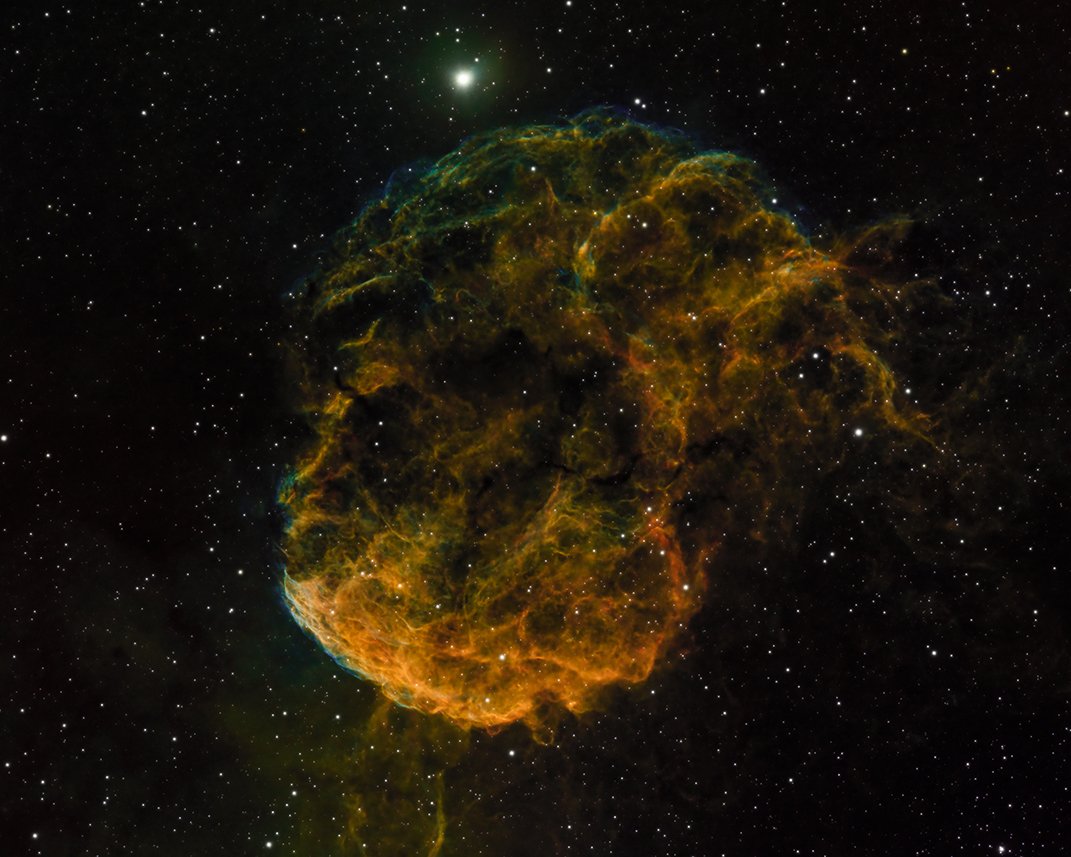
This is the Jellyfish nebula, a supernova remnant about 4800 light years away. The energy of the explosion has stimulated the Sulpher, Hydrogen and Oxygen in the surrounding ejecta. These specific ions are captured using narrowband filters, and put together using the "Hubble" palette. About 10 hours integration, imaged over several nights from Comrie, Scotland using an 80mm refractor, a mono CMOS camera and SHO narrowband filters.

The pac-man nebula is another emission nebula, captured using narrowband filters. Like most emission nebula, it is a star nursery, about 9200 light years away. About 5 hour integration, taken from Comrie, Scotland using an 80mm refractor, a mono CMOS camera and SHO narrowband filters.
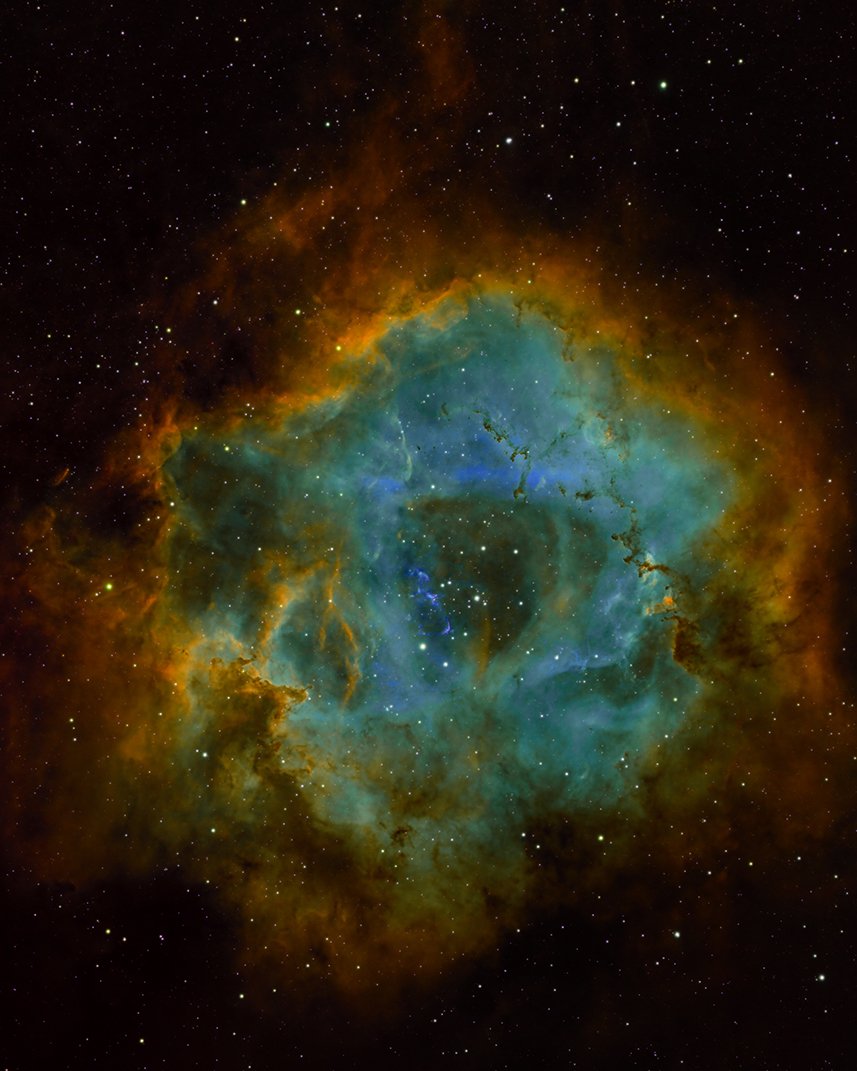
The rosette nebula is another bright emission nebula, captured using narrowband filters. Like a lot of emission nebula, it is a star nursery, about 9200 light years away. About 5 hours integration, taken from Comrie, Scotland using an 80mm refractor, a mono CMOS camera and SHO narrowband filters.

One of my favourite objects in the Northern sky, Andromeda galaxy. Bright enough to see with the naked eye, and bigger than 3 moons in our field of view. About 2 hours integration, taken from a dark site near Drumochter, Scotland using an 80mm refractor and a colour CMOS camera.
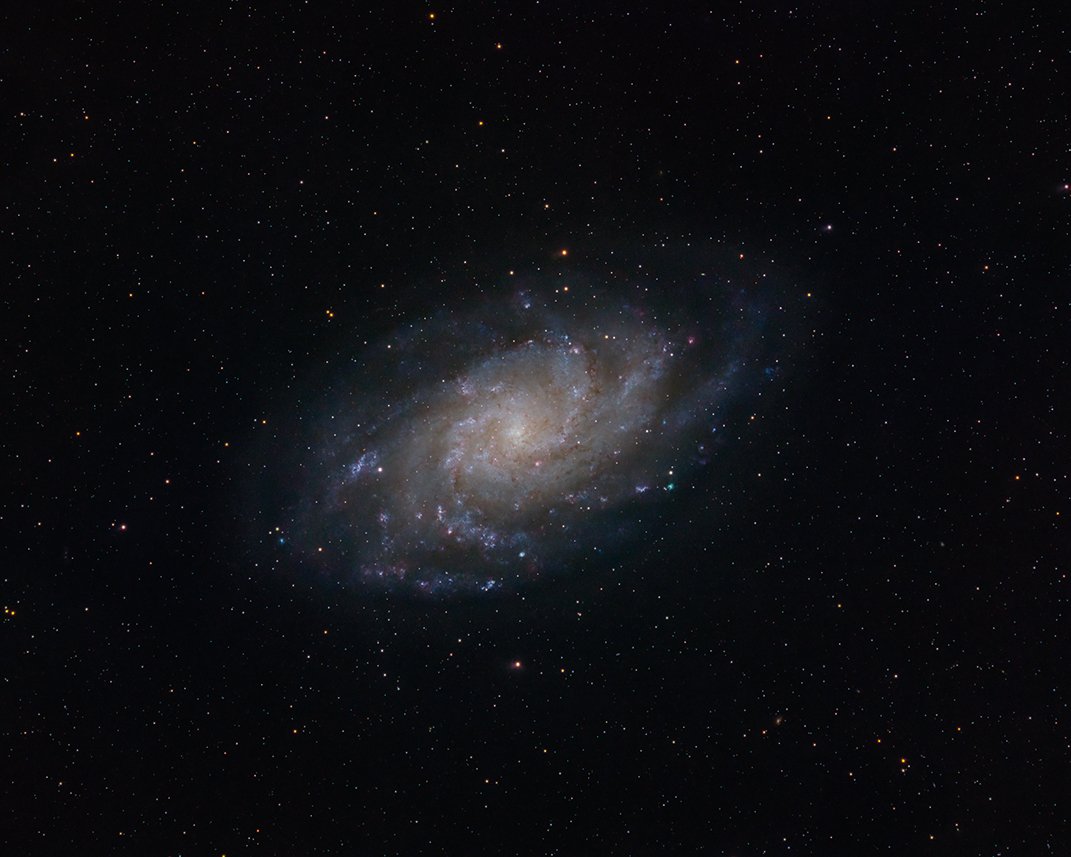
Another of our local group, this is the Triangulum Galaxy. About 2 hours integration, taken from a dark site near Drumochter, Scotland using an 80mm refractor and a colour CMOS camera.
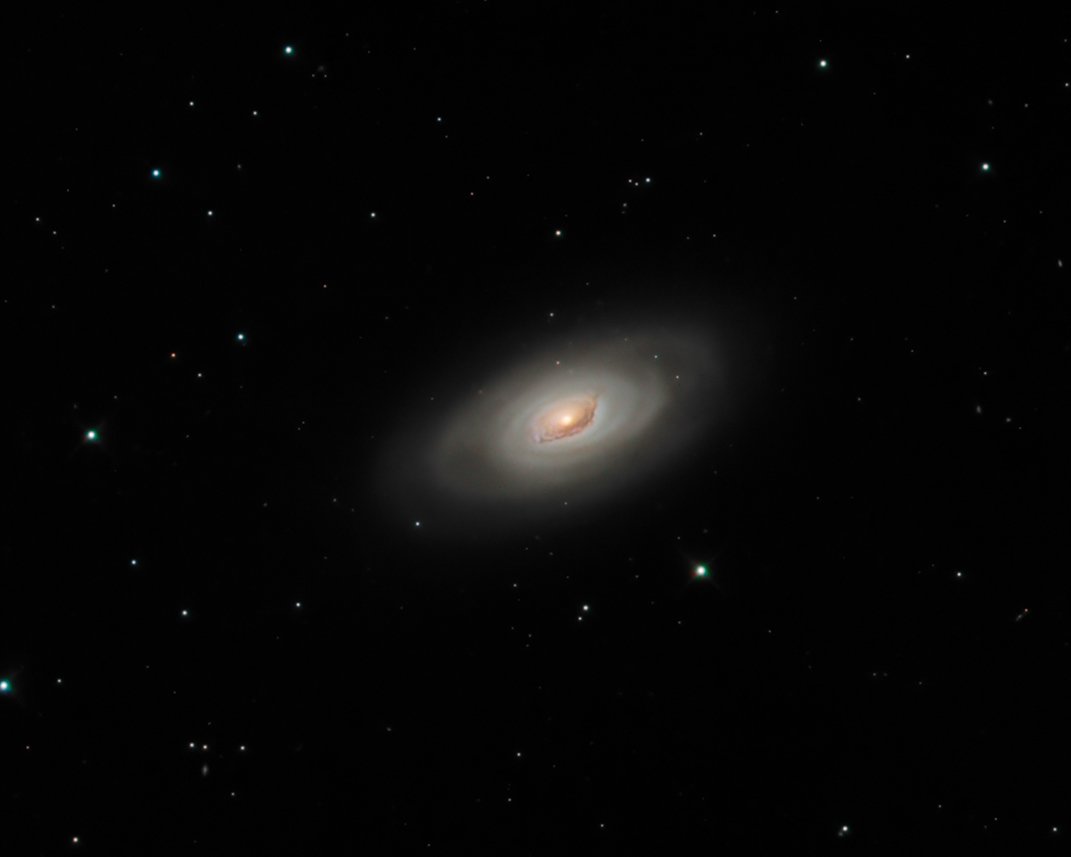
One of the smaller galaxies in our local group, the Black-Eye galaxy. About 3 hours integration, imaged from Comrie, Scotland using an 8 inch RC reflector, a mono CMOS camera and LRGB filters.

One of the more beautiful objects, the interacting pair of galaxies known as the Whirlpool galaxy.. About 10 hours integration, imaged from Comrie, Scotland using an 8 inch RC reflector, a mono CMOS camera and LRGB filters.
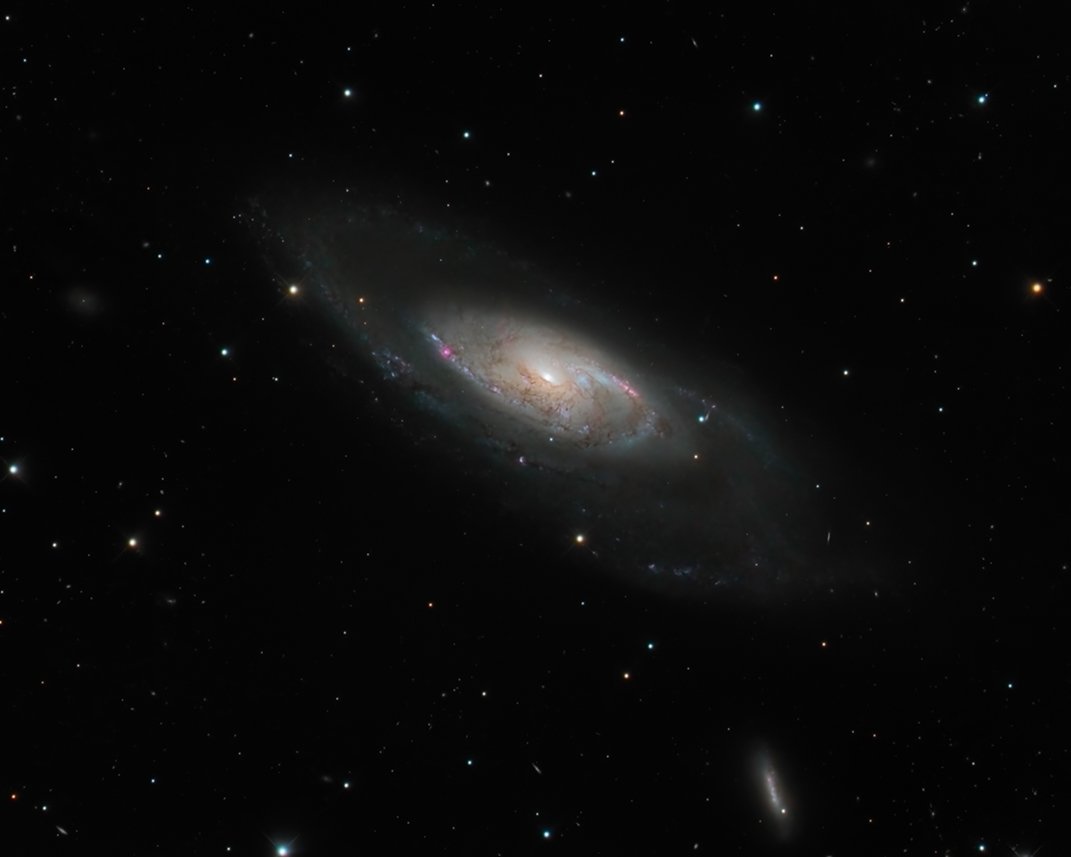
The active galaxy M106. About 9 hours integration, imaged from Comrie, Scotland using an 8 inch RC reflector, a mono CMOS camera and LRGB filters.

The Leo Triplet of galaxies. About 5 hrs integrations, imaged from Comrie, Scotland using an 80mm refractor, a mono CMOS camera and LRGB filters.
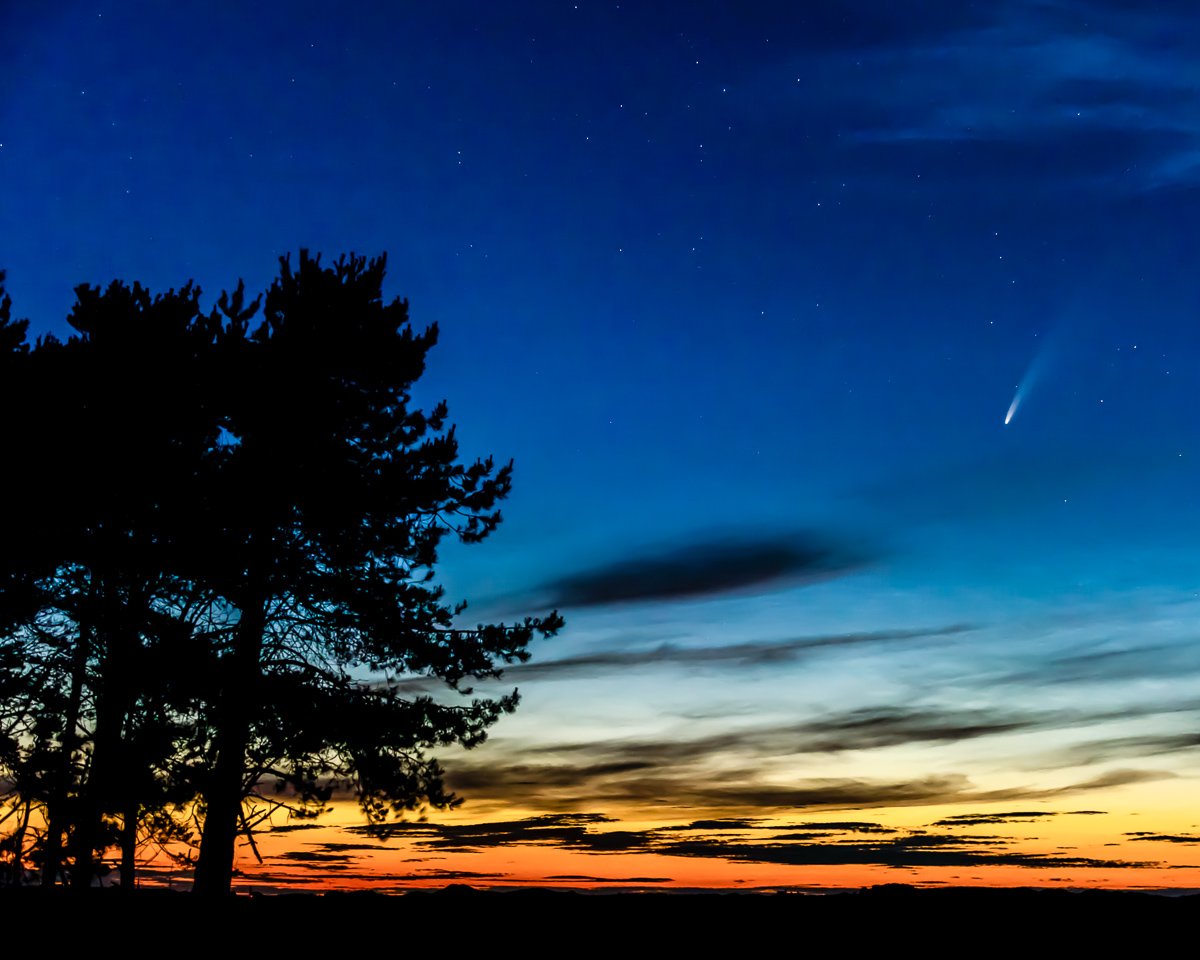
C/2020 F3 Neowise. Imaged hear on the coast near Berwick, Scotland.
